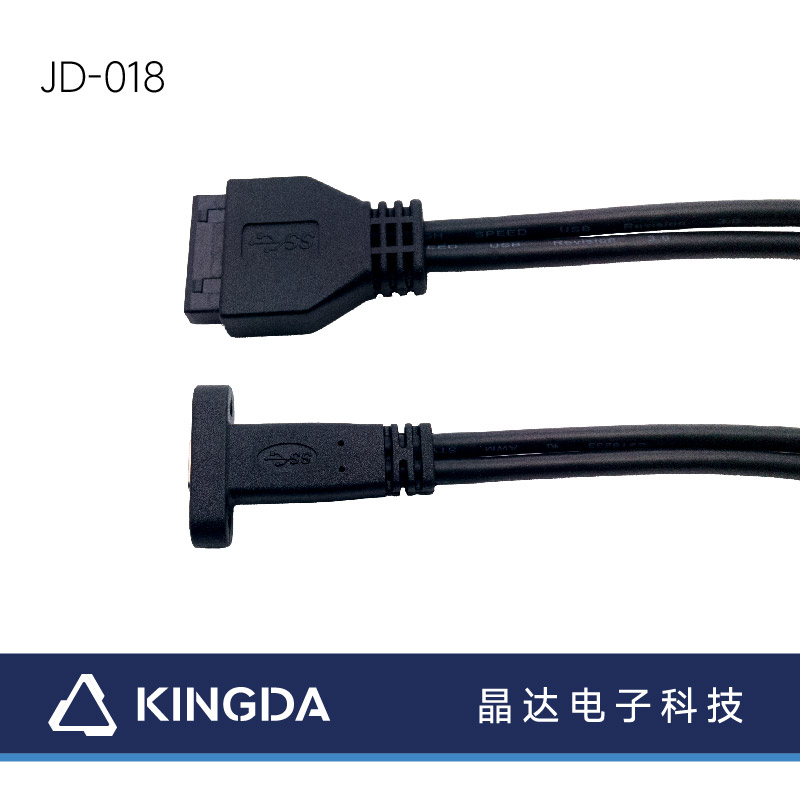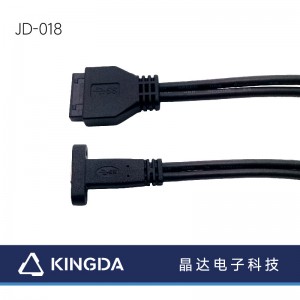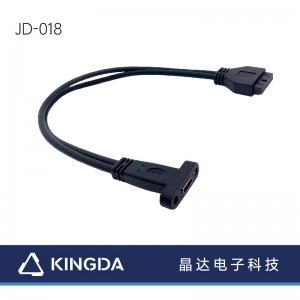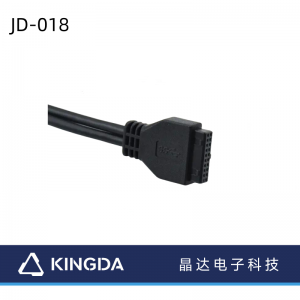USB3.1 type-c Female to usb3.0 20pin Data Cable header extension Cable 50cm with PCI Baffle for PC Motherboard
Applications:
The Ultra Supper High speed USB C cable widely used in COMPUTER, Motherboard
● INTERFACE
Compliant with USB Power Delivery 2.0, providing up to 100 W 。Double the bandwidth of USB 3.0, increasing to 10 Gbps with SuperSpeed+ USB3.1 Combines multiple protocols in a single cable, including DisplayPort™, PCIe® or Thunderbolt™
● Data rate
Support USB 3.0 5Gbps Max..
● Detail
The wire meets the standard of USB 3.0 Association. The 9-core tinned copper conductor and multi-layer signal shielding make the data transmission more stable and efficient. The plug is made of high-quality metal. The nickel plating process improves the oxidation resistance. The gold plating of phosphor copper shrapnel makes the plugging life longer and the contact impedance smaller.
● Wide Compatibility
Compatible with Oculus Quest, COMPUTER, Motherboard
Product Detail Specifications
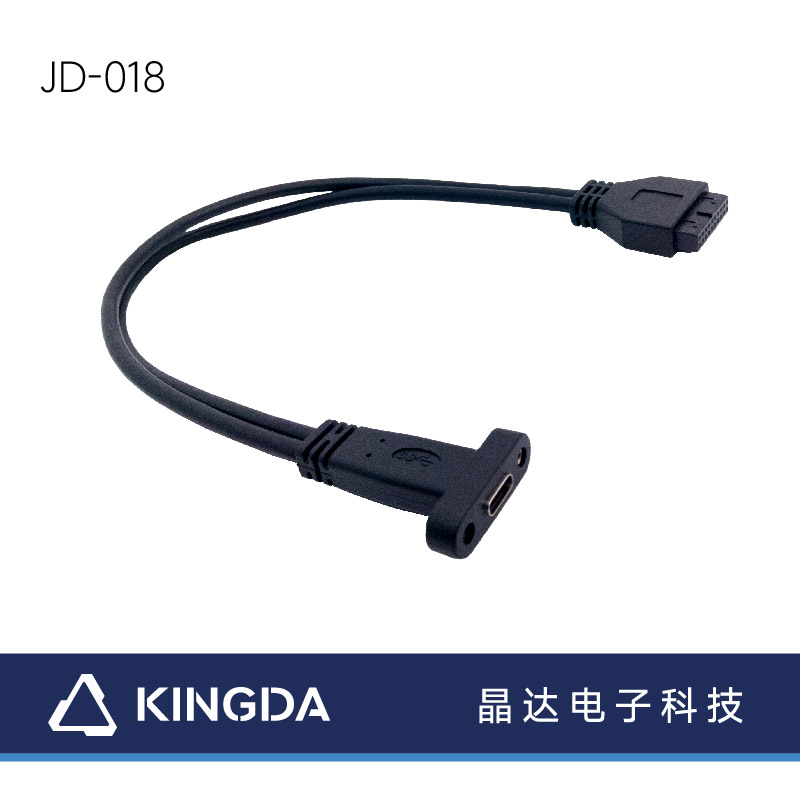
Physical CharacteristicsCable
Cable Length:0.5M
Color: Black
Connector Style: Straight
Product Weight:
Wire Diameter:4.8millimeter
Packaging InformationPackage
Quantity: 1Shipping (Package)
Weight:
Product Description
Connector(s)
Connector A: USB3.1 Female Male
Connector B:USB3.0 20PIN Female
USB 3.0 Motherboard 20 Pin Header to USB Type C Panel Cable
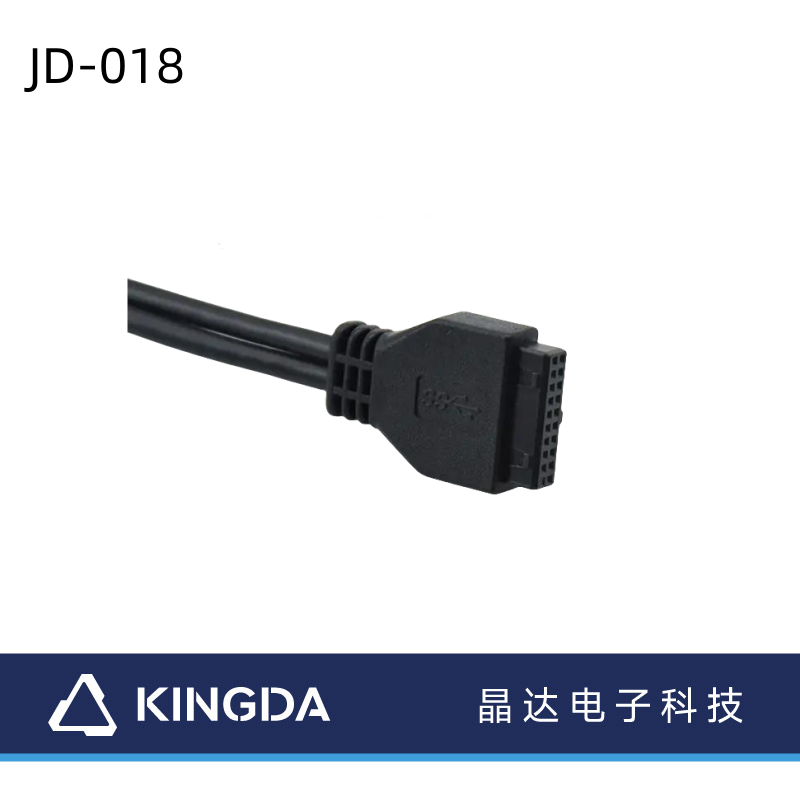
Specifications
1. USB3.1 Gen1 - transfer data at speeds of up to 5 Gbps
2. Support reversible plug orientation
3. USB 3.1 Female With panel or not
4. 3A Fast Charging, Charging +Transmission
4. All materials with ROHS complaint
| Electrical | |
| Quality Control system | Operation according to regulation & rules in ISO9001 |
| Voltage | DC300V |
| Insulation Resistance | 2M min |
| Contact Resistance | 5 ohm max |
| Working Temperature | -25C—80C |
| Data transfer rate | 5Gbps |
Say what’s the difference between USB history and Type-C
Currently dominate consumer electronics devices is USB-C physical interface system, on the USB-C interface can realize data transmission, video transmission, power transmission, every USB standard update affect global massive devices, consumer experience and industry trend also changes, with daily every day to use smartphone advanced examples, mobile battery power brought huge loss, charge once a day for smartphones is normal, charging interface is also various, so someone asked what is the difference between USB and Type-C! In fact, the same concept Type-C is a connection interface of USB interface. There is no difference between pros and negative, so there is no need to worry about inserting wrong data cable when using this interface. In addition to the same front and opposite sides of the interface, the USB Type-C interface also has the following characteristics: the faster data transmission, and the maximum data transmission speed of 10Gbit / s, which is also the standard of USB3.1. Second, Type-C interface socket size is about 8.3 mm by 2.6 mm, in today’s smart phone more and more thin current, thinner body need thinner port, this is an important reason of USBType-C more and more popular, can through 3A-5A current, but also support beyond the existing USB power supply capacity, the maximum can provide 100W power, greatly speed up the speed of charging. USB History Version birth specification In 1996, the USB interface was born, which uses the D + D-wire core for data communication, laying the foundation for the future generalization. In 2000, USB was updated to U S B version 2.0, quickly large-scale general, the rate of 480Mbps, and today is also the most commonly used interface standard. In January 2008, USB3.0 was released, the data transmission changed to TX + TX-RX + RX-wire core, the transmission rate greatly increased from 480Mbps to 5Gbps, and the read and write speed exceeded 100 megabytes per second, bringing a qualitative leap. In July 2013, USB3.1 was released, with the maximum rate doubling to 10Gbps, and the familiar USB-C interface was born at this time. Here is a complaint, USB-IF renamed the old USB 3.0 renamed USB 3.1Gen 1, the newly released USB3.1 is called USB3.1 Gen 2, ordinary consumers began to appear confused phenomenon. In September 2017, USB3.2 came again. Although the version number is still little changed, it supports the simultaneous use of the upper and lower pins of the USB-C interface, and the two sets of high-speed channels are used at the same time, with the highest rate doubling to 20Gbps. According to the newly published specifications, the USB3.0.USB3.1 version name will be completely disappeared, unified into the USB3.2 sequence, the three are once again renamed USB3.2Gen1, USB3.2 Gen2, USB3.2 Gen2x2. In September 2019, the USB4 was officially released, with a maximum transmission rate of 40Gbp

